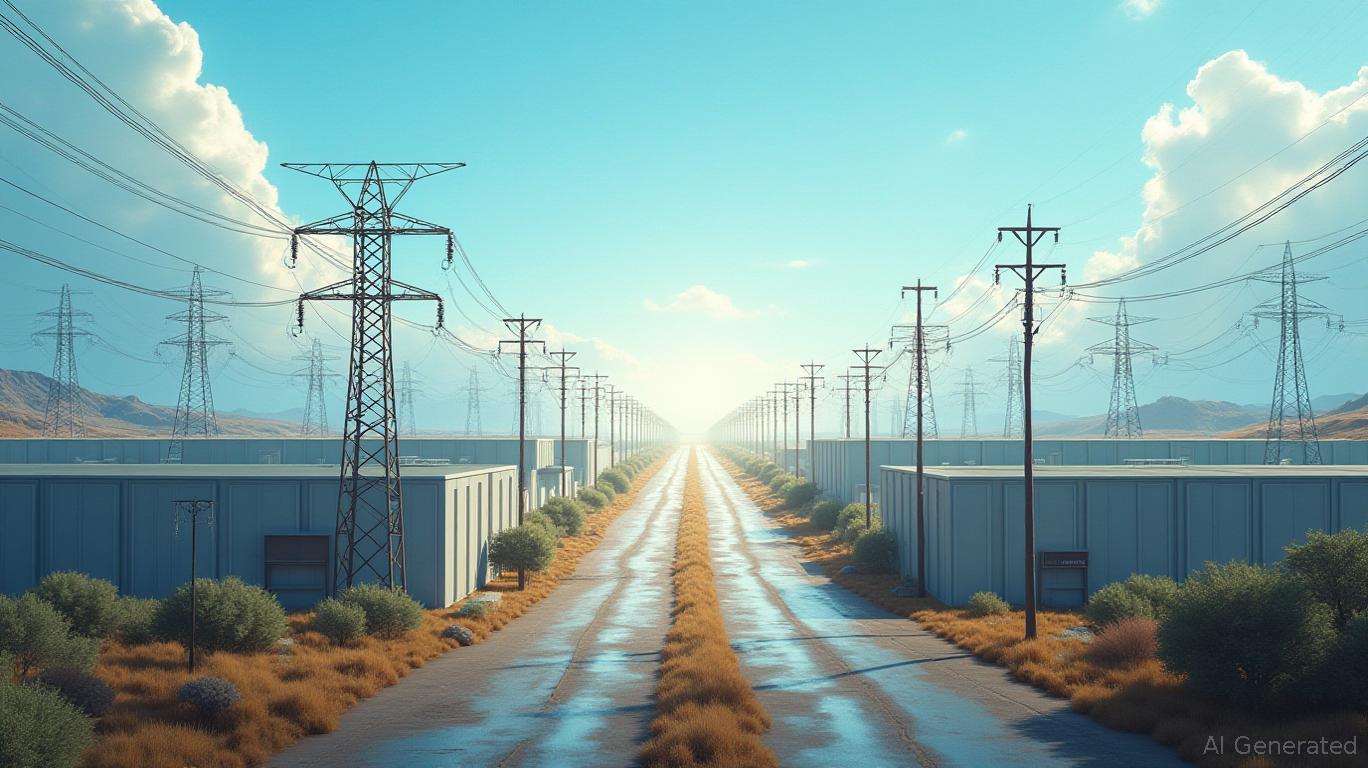The Grid Crunch: How Power Limitations Are Reshaping Data Center Markets and Creating Investor Winners and Losers
The data center boom is hitting a wall—not of demand, but of electrons. As hyperscalers like
Web Services (AWS), Microsoft, and Google Cloud (GCP) push toward exascale computing, a stark reality has emerged: the power grid cannot keep pace. A perfect storm of aging infrastructure, regulatory bottlenecks, and speculative overbuilding is creating a bifurcated market. While hyperscalers secure long-term grid capacity, speculative projects face collapse. For investors, this is a moment of profound opportunity—and peril.The Grid Gap: Power Demand vs. Infrastructure
Data centers now account for 1% of global electricity use, and that figure is rising fast. By 2030, U.S. data center power demand could double, driven by AI and cloud workloads. But here's the catch: building a data center takes 2–3 years, while securing grid upgrades to power it can take 4–8 years. This mismatch has created a crisis.

Utilities are overwhelmed. In Texas, where 60% of new data center projects are concentrated, grid operator ERCOT warns that interconnection queues for data centers now rival those of wind farms. Meanwhile, European grids, like the Iberian Peninsula's, face voltage instability and interconnection bottlenecks. The April 2025 blackout there, which left 40 million people without power, underscored how fragile grids are when renewables dominate and inertia lags.
The Bifurcated Market: Winners and Losers
The divide is clear: hyperscalers are winning, while speculative developers are losing.
Hyperscalers: Secure, Scalable, and Grid-Ready
AWS, Microsoft, and Google are locking in grid capacity through long-term take-or-pay contracts and co-ownership deals with utilities. For example:
- Xcel Energy (XEL) is partnering with hyperscalers in Colorado to build 1.5 GW of dedicated power infrastructure, including green hydrogen facilities.
- NextEra Energy (NGG) is developing grid-scale battery storage hubs in Texas to stabilize data center loads.
These hyperscalers also have the capital to navigate regulatory hurdles. When the Federal Energy Regulatory Commission (FERC) rejected a co-located data center project in 2024 for lacking grid reliability safeguards, hyperscalers leaned on their legal and engineering teams to revise designs. Smaller players? They can't.
Speculative Developers: Overexposed and Underpowered
Smaller colocation providers and speculative REITs are at risk. Take QTS Realty Trust (QTS), which expanded rapidly in the Southeast U.S. without securing grid commitments. When Georgia Power delayed interconnection approvals by 18 months, QTS's projects were mothballed, shares plummeted 35%, and debt ratios spiked.
The warning signs are clear:
- Land speculation bubbles in markets like Northern Virginia and Amsterdam (where land prices rose 200% since 2020) are detaching from grid reality.
- Regulatory risks loom. The EU's proposed “Data Act” could force data centers to share grid capacity with renewables projects, squeezing margins.
Investment Opportunities: Utilities and Hyperscaler-Backed REITs
The grid crunch is a tailwind for two sectors: utilities with expansion pipelines and REITs with hyperscaler partnerships.
Utilities: The Grid's New Gold Rush
Utilities with grid expansion projects are poised to profit from data center demand. Key plays:
- Xcel Energy (XEL): Leading in grid-forming inverters and green hydrogen for hyperscalers.
- Southern Company (SO): Building a $2 billion substation in Atlanta to serve AWS's 500 MW campus.
- National Grid (NGG): Expanding interconnectors in New England to handle 10 GW of data center growth by 2030.
Hyperscaler-Backed REITs: Steady as She Goes
Data center REITs with long-term hyperscaler leases are insulated from grid risks. Look for:
- Digital Realty (DLR): 80% of revenue comes from hyperscaler contracts with 10+ year terms.
- Coronado Global (CGRU): Partners with Microsoft on modular data centers in low-risk grid regions like Oregon.
Avoid the Speculative Trap
Beware of REITs and developers without grid certainty:
- CyrusOne (Converged Infrastructure): 30% of its projects in Texas face delayed interconnection approvals.
- EdgeCore Networks (EDGE): Overexposed to Europe, where grid moratoriums (e.g., Dublin's until 2028) could strand assets.
Conclusion: Act Now—Before the Grid Bottleneck Becomes a Bubble Burst
The data center market is fracturing. Investors who back utilities and hyperscaler-backed REITs will profit as grids modernize. Those who gamble on speculative developers risk the same fate as 2008's subprime borrowers—except this time, it's electrons, not mortgages, that are the collateral.
The clock is ticking. Grid upgrades take years, and hyperscalers are already securing their futures. Will you?

Comments
No comments yet